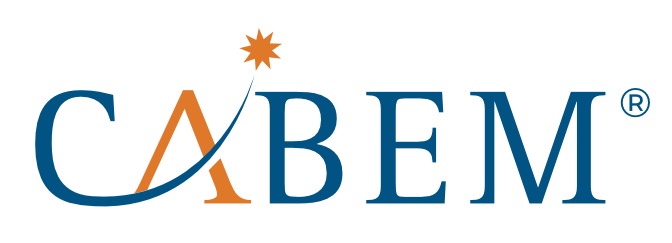The Backbone of Decision-making and Problem-solving
Competency management is essential for organizations that cultivate a skilled and adaptable workforce. It encompasses five key categories: knowledge, skills, abilities, behavior, and personal characteristics. Today, we’ll dive deep into the knowledge category — a critical pillar that lays the foundation for all other competencies.
In competency management, knowledge refers to the factual and procedural information employees need to perform their roles effectively. Unlike skills involving practical application, knowledge is the cognitive category, forming the backbone of decision-making and problem-solving. Let’s explore why knowledge is essential, how it can be developed, and how organizations can strategically manage this vital category.
The Role of Knowledge in Competency Management
Knowledge is not just about “knowing”; it’s about understanding the ‘why’ and ‘how’ behind processes, decisions, and industry standards. In competency management, knowledge enables employees to:
- Make Informed Decisions: Knowledgeable employees can interpret information, assess situations accurately, and make decisions that align with organizational goals.
- Solve Complex Problems: Knowledge provides the context and resources needed for effective problem-solving, allowing employees to approach challenges with a broader understanding.
- Adapt to Change: In fast-evolving industries, knowledgeable employees can adapt more readily to changes in technology, processes, and customer demands.
Types of Knowledge in Competency Management
- Declarative Knowledge: This is factual knowledge about specific topics. For example, in a healthcare organization, declarative knowledge includes understanding medical terminology, treatments, and regulatory requirements.
- Procedural Knowledge: This involves knowing “how” to do things. It includes knowledge of processes, procedures, and routines. For instance, in manufacturing, procedural knowledge encompasses steps in the production process or the operation of specialized equipment.
- Tacit Knowledge: Often referred to as “informal knowledge,” tacit knowledge is experiential and less tangible. It includes insights and intuition gained through years of hands-on experience and is harder to document.
- Contextual Knowledge: This type of knowledge pertains to the environment in which employees operate. For example, a marketing team must understand the unique context of their target audience to create impactful campaigns.
Strategies for Enhancing Knowledge within Competency Management
- Implement Knowledge Sharing Platforms: Knowledge management tools and platforms, such as intranets or collaboration software, enable employees to access information and share insights. Organizations can benefit from building knowledge repositories that employees can easily refer to for guidance.
- Offer Continuous Learning Opportunities: From online courses to on-the-job training, continuous learning initiatives keep employees informed about industry trends, technological advancements, and best practices.
- Encourage Mentorship Programs: Pairing experienced employees with newer hires promotes the transfer of tacit knowledge. Mentorship allows employees to learn contextual and experiential knowledge that may not be documented elsewhere.
- Promote Cross-Departmental Collaboration: Employees gain a broader perspective and knowledge of how different functions impact each other within the organization by working with colleagues from other departments.
- Incorporate Knowledge Assessments: Regular assessments, such as quizzes, certifications, or scenario-based evaluations, can help determine employees’ knowledge levels and identify areas for improvement. These assessments also ensure that knowledge standards are maintained across the organization.
Measuring Knowledge in Competency Management
Quantifying knowledge can be challenging, but it’s essential for tracking progress and ensuring alignment with organizational goals. Some methods to measure knowledge include:
- Knowledge Tests and Assessments: Regularly testing employees’ knowledge ensures they meet the organization’s standards.
- Performance Reviews and Feedback: Managers can assess knowledge through observation, evaluating how well employees apply their knowledge to real-world scenarios.
- Knowledge Retention Rates: Measuring how much employees retain from training or knowledge-sharing sessions can indicate the effectiveness of these initiatives.
Integrating Knowledge with Other Competency Components
The knowledge component serves as the foundation upon which other competencies are built.
- Skills Development: Knowledge provides the context needed for skill development. For example, understanding software development methodologies enhances an IT professional’s coding skills.
- Abilities: Knowledge helps employees leverage their innate skills more effectively, enabling them to apply their talents in meaningful ways.
- Behavioral Competencies: Knowledge influences workplace behavior. Employees knowledgeable about cultural values, ethics, and organizational policies are more likely to demonstrate behaviors aligned with company standards.
- Personal Characteristics: Knowledge can shape personal traits such as confidence. The more knowledge employees have, the more confidently they can perform their tasks.
Knowledge is the cornerstone of effective competency management. It enables employees to contribute meaningfully to their roles and adapt to the dynamic workplace. Organizations prioritize knowledge within competency frameworks and establish a strong foundation for growth, innovation, and resilience.
Managers can effectively lead their teams and drive organizational success across diverse sectors by mastering and showcasing these five essential competency areas: knowledge, skills, abilities, behaviors, and certifications or credentials. Competency management software plays a vital role in this process, enabling managers to recognize strengths, address development areas, and continuously enhance their capabilities. Adopting these core competencies ensures managers become impactful leaders and foster organizational growth and innovation.
Every organization requires its employees to perform tasks proficiently. At CABEM Technologies, our Competency Manager software bridges this need by systematically compiling and building competencies that capture and institutionalize enterprise knowledge. We’ve found that many training programs are siloed, lacking a comprehensive approach aligned with organizational goals. Our platform allows businesses to develop and align competencies with departments, roles, locations, and other organizational segments. Contact us today to get started.

